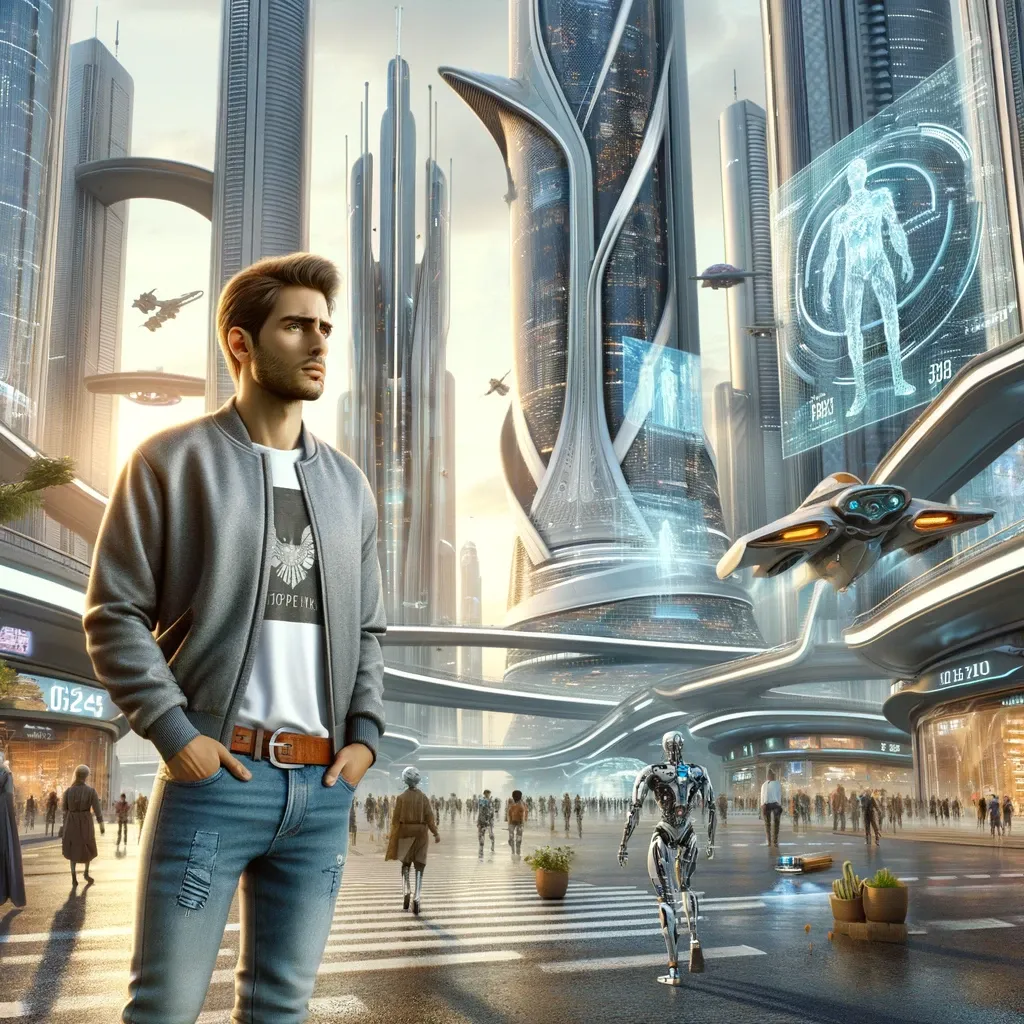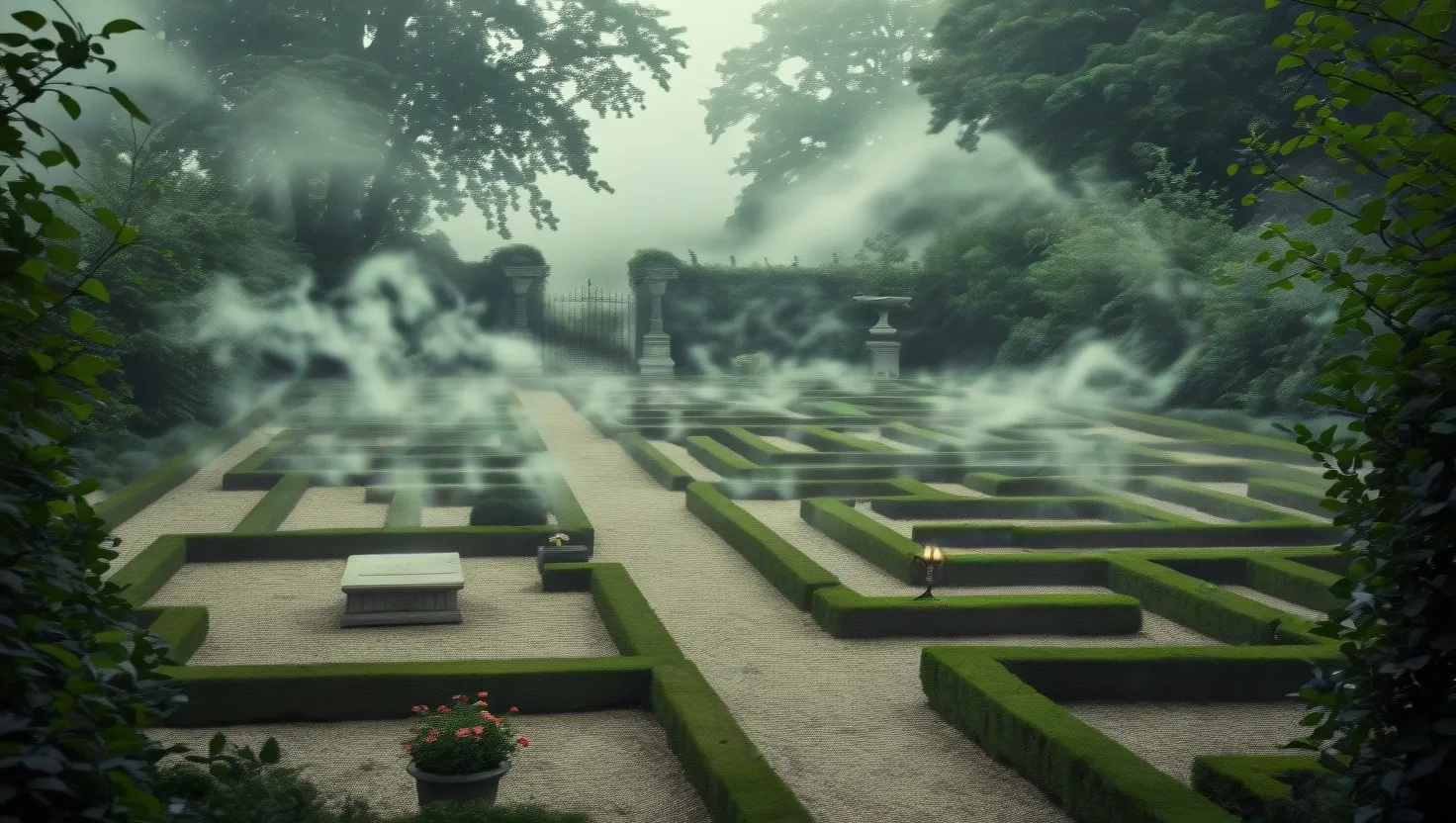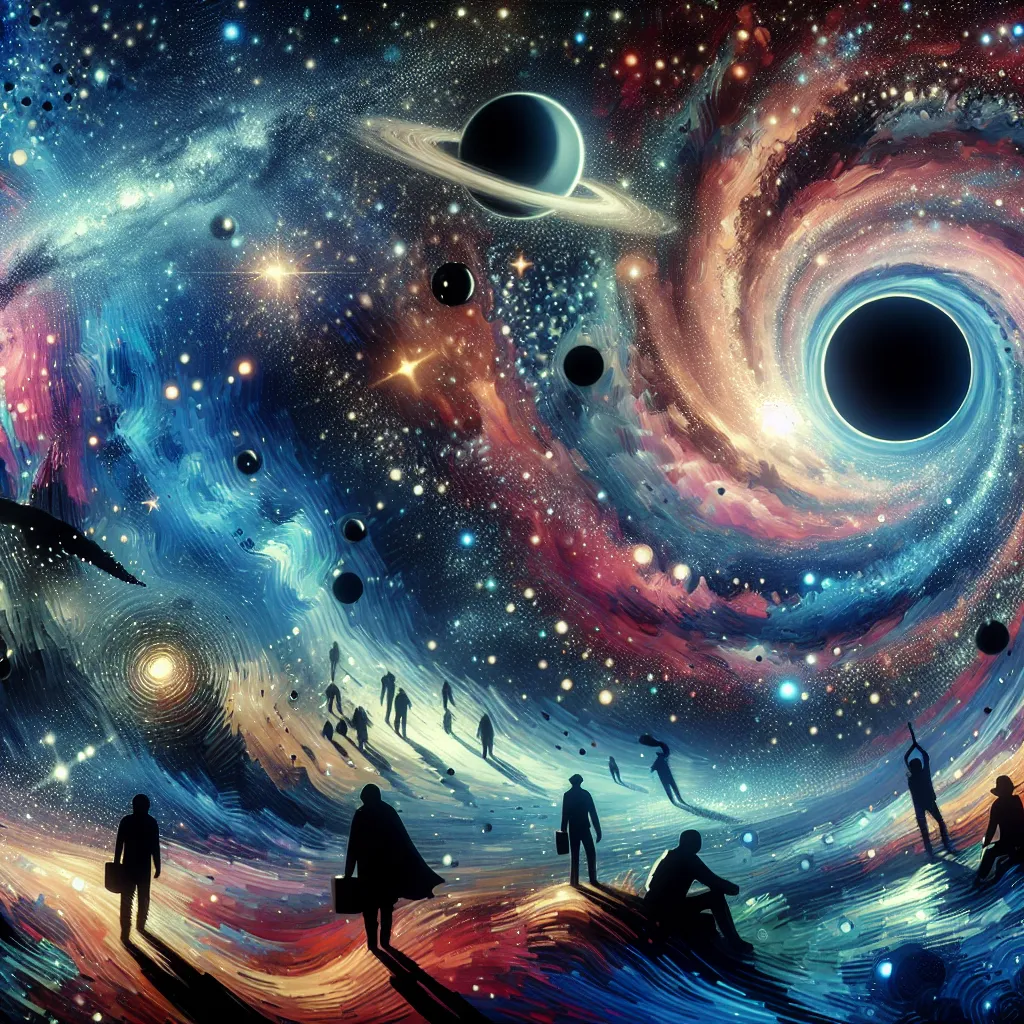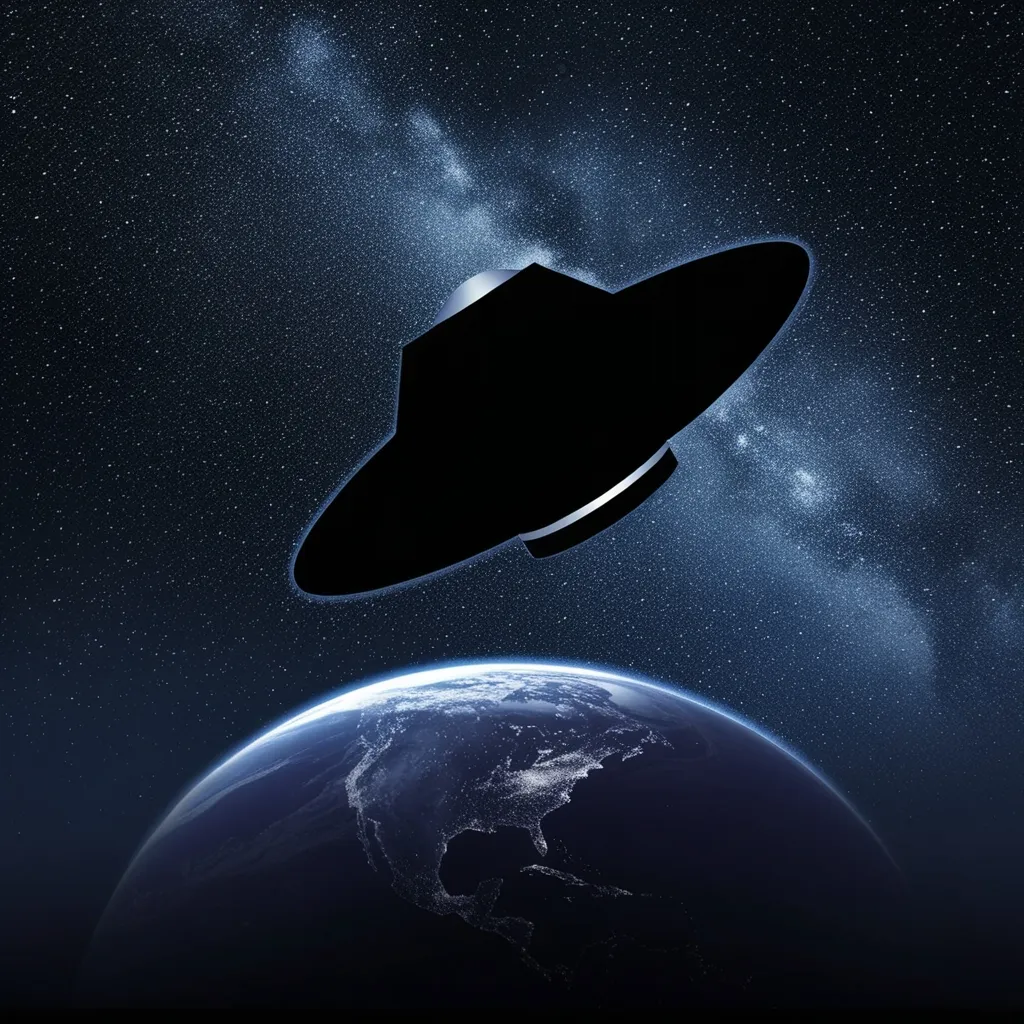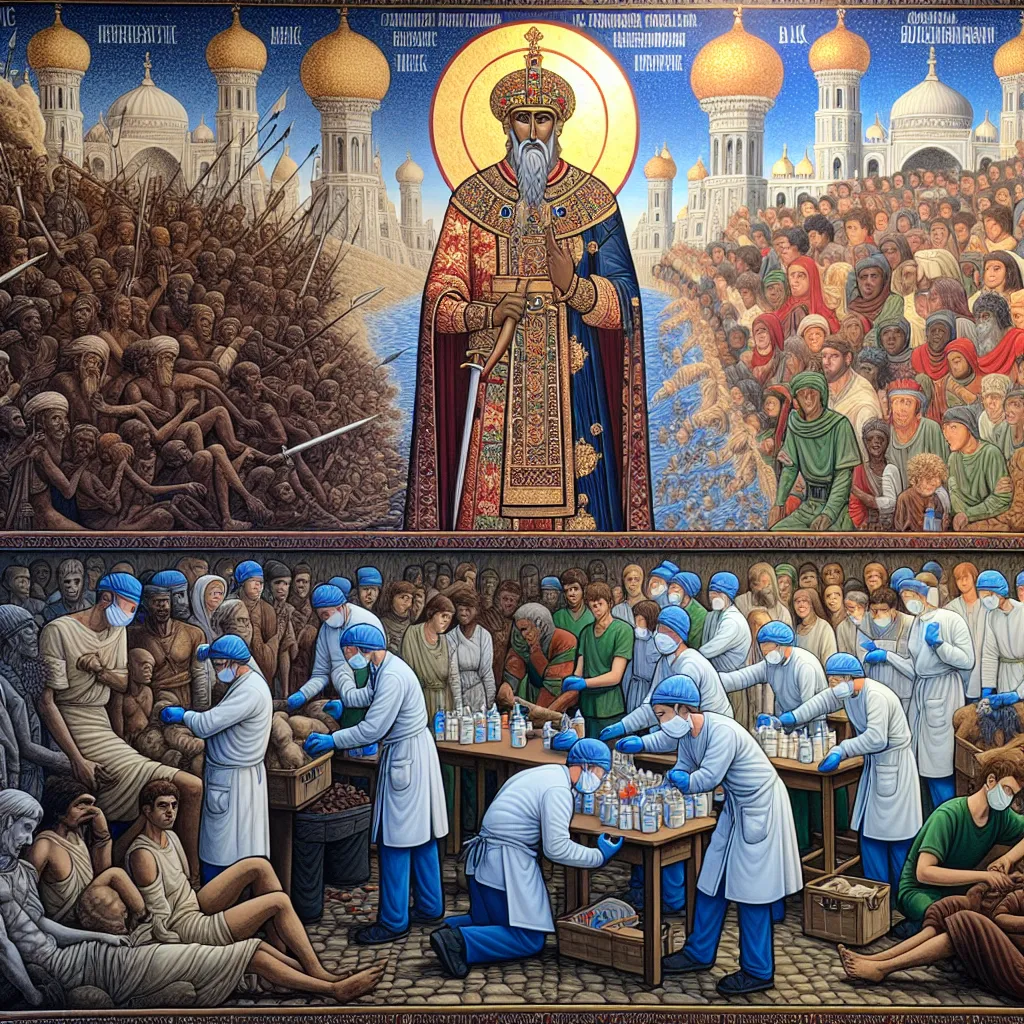The Extraordinary Tale of Paul Amadeus Dienach
In 1924, Paul Amadeus Dienach, a Swiss teacher battling tuberculosis, found himself at a pivotal moment. As his health deteriorated, he decided to leave his teaching position in Greece and return to his homeland, Switzerland. Before departing, he entrusted hundreds of pages of handwritten notes to his favorite student, Georgios Papahatsis, hoping the translations would aid Papahatsis in mastering the German language. Little did Papahatsis know, these notes would unravel an extraordinary tale.
Initially, Papahatsis approached the task with a sense of academic curiosity, expecting to find a collection of essays or perhaps a personal diary. As he translated Dienach’s meticulous writings, a different narrative emerged. The notes detailed astonishing visions of the future: nuclear wars, the colonization of Mars, and the rise of a global government. Descriptions of flying vehicles, holographic technology, and contact with alien life seemed more fitting for a science fiction novel than a diary.
Papahatsis was initially skeptical, convinced he was translating a work of fiction. However, as he delved deeper, he realized that Dienach was recounting personal experiences, not imagined scenarios. Dienach had written about entering a coma in 1921 and waking up in the year 3906. This incredible account of a man experiencing a time slip and living in a future society for a whole year defied logical explanation.
Papahatsis was stunned. This was no ordinary manuscript; it was a chronicle of an extraordinary journey through time. The discovery set the stage for one of the most intriguing and controversial stories of time travel and future utopia ever recorded.
An Illness and a Time Slip
In May 1921, Paul Amadeus Dienach, a Swiss language teacher, was leading his class in Greece when he began to feel an unsettling dizziness. Dienach, who had been grappling with tuberculosis for some time, soon found himself confined to a hospital bed. His condition worsened rapidly, plunging him into a feverish state. For hours, he drifted in and out of consciousness, barely aware of the doctors and nurses bustling around him.
As his body succumbed to the illness, Dienach’s mind embarked on an unexpected journey. He slipped into a deep coma, one that seemed to transcend the boundaries of time itself. When he finally regained consciousness, he was no longer in the familiar confines of his 1920s hospital room. Instead, he found himself surrounded by strange faces speaking an unfamiliar language, wearing clothes that defied any fashion he had ever seen.
Dienach, ever the linguist, recognized snippets of English and Swedish but struggled to understand the conversation. Amidst his confusion, a doctor, speaking broken German, informed him that he was believed to be Andreas Northam, a renowned physics professor who had recently survived a severe accident. Dienach, seeing a stranger’s face in the mirror, was devastated. He insisted he was a simple language teacher from Switzerland, but his pleas were met with disbelief.
The revelation that the current year was 3906 shocked him to the core. The view outside his window, with its soaring buildings and gravity-defying vehicles, was overwhelming. Struggling to grasp this new reality, Dienach fell unconscious once more. When he awoke, his extraordinary journey had just begun, setting the stage for his year-long stay in a future world. This initial disorientation marked the beginning of an incredible and surreal adventure that would redefine his understanding of time and existence.
Awakening in a Strange Future
Paul Amadeus Dienach’s initial awakening in 3906 was an exercise in bewilderment and awe. As he emerged from unconsciousness, he found himself in a hospital room, but nothing about it was familiar. The walls, made of a crystal-like material, provided a panoramic view of a cityscape beyond his wildest dreams. Towers reached skyward, piercing through clouds, and vehicles moved with a grace that defied gravity. People in the room wore clothes that seemed to shimmer and change color with the light, speaking a language that was both foreign and melodic.
His linguistic skills allowed him to catch fragments of English and Swedish, but they weren’t enough to make sense of the conversation around him. One of the doctors, recognizing his struggle, attempted to communicate in broken German. Through this exchange, Dienach learned that he was believed to be Andreas Northam, a prominent physicist. The mirror confirmed his deepest fears: the face staring back at him was not his own.
Overwhelmed by the impossibility of his situation, Dienach felt a surge of panic. His insistence that he was a Swiss teacher from 1921 was met with confusion and concern. The staff, particularly the older physician, became curious when he mentioned Switzerland and the year 1922. When they revealed that it was actually 3906, the gravity of his situation hit him like a tidal wave.
As Dienach peered out the window, absorbing the reality of a future world, he blacked out from sheer overload. Upon waking, he found himself under the care of individuals who treated him with a mix of skepticism and compassion. They explained the concept of a “consciousness shift,” suggesting that his mind had traveled through time to inhabit another body.
Slowly, Dienach began to adapt to this extraordinary future. He marveled at the crystal walls that offered an unimpeded view of the ultramodern city and the pastel-colored, glowing metal objects that were warm to the touch. Guided through corridors by his caretakers, he was introduced to two elderly men in white robes—Electors, wise elders who eventually came to believe his tale. Thus began Dienach’s immersion into a society two millennia ahead of his own, where he would spend a year uncovering the marvels and mysteries of a world that defied all his previous conceptions of reality.
3906
As Paul Amadeus Dienach began to adjust to life in 3906, he found himself both a curious observer and an eager student of this remarkable new world. His guides, particularly Stefan and the Electors, provided him with a wealth of knowledge about the society, technology, and culture that defined this future era.
The buildings that towered above the city were constructed with materials Dienach had never seen before—crystal-like structures that were both sturdy and aesthetically magnificent. The walls themselves seemed alive, providing panoramic views and sometimes even changing color based on the time of day or the mood of the occupants. The vehicles, which he initially mistook for some sort of futuristic aircraft, moved effortlessly through the air without any visible means of propulsion. This, he learned, was thanks to advanced anti-gravity technology that had been perfected over centuries.
Dienach’s education about 3906 wasn’t limited to technological marvels. He was introduced to a societal structure that emphasized collective well-being over individual gain. The Electors, who initially appeared as priests or kings, were wise elders selected for their knowledge and ethical integrity, guiding society with a focus on philosophical and humanitarian principles rather than political power.
Communication in 3906 was another aspect that fascinated Dienach. The language, a blend of English and Scandinavian influences, evolved over centuries of global interactions. He devoted countless hours to mastering it, aided by a device called the Oregon Schwager. This handheld device projected three-dimensional images and provided interactive lessons, much like an advanced version of an iPad, making learning an immersive experience.
The Electors explained to Dienach the concept of a “consciousness shift”—a rare phenomenon where an individual’s consciousness could travel across time and inhabit another person’s body. This explained how Dienach, a teacher from 1921, could wake up in the body of Andreas Northam, a prominent physicist in 3906.
Through his interactions with Stefan and others, Dienach discovered the history leading up to this future. He learned about humanity’s trials, including a devastating nuclear war in the 23rd century and the eventual establishment of a global government called the Redstot. This government, initially plagued by corruption, evolved over time to be led by scientists, philosophers, and humanitarians, creating a society focused on knowledge, art, and the collective good.
As Dienach navigated this new world, he was constantly struck by the harmony and advanced understanding that characterized human life in 3906. It was a utopia shaped by lessons from the past, technological innovation, and a profound shift in human consciousness.
Electors and Their Wisdom
As Paul Amadeus Dienach delved deeper into the society of 3906, he came to understand the pivotal role of the Electors. Initially, he mistook these dignified figures in white robes for religious leaders or monarchs, but he soon learned they were the custodians of wisdom and ethical governance. The Electors, chosen for their deep knowledge, moral integrity, and philosophical insight, served as the guiding force of this advanced society.
The Electors believed Dienach’s account of a consciousness shift after extensive questioning. They were familiar with this rare phenomenon, where an individual’s consciousness could traverse time and inhabit another’s body. Dienach’s detailed recollections of the early 20th century, coupled with his genuine bewilderment and emotional responses, convinced them of his sincerity. They theorized that when Andreas Northam’s body was revived after a fatal accident, Dienach’s consciousness from 1921 had somehow been transported into it.
Recognizing the uniqueness of Dienach’s situation, the Electors decided to educate him about the new world he found himself in, while also learning from him about the past. They assigned Stefan, a close friend of Andreas Northam, to be Dienach’s guide and confidant. Stefan, knowledgeable and empathetic, was crucial in helping Dienach navigate this unfamiliar future.
Stefan introduced Dienach to the societal structures and technological advancements of 3906. He explained how humanity had transitioned from a tumultuous past marked by wars and environmental challenges to a harmonious, technologically sophisticated society. The Electors, with their commitment to knowledge and humanitarian principles, had overseen this transformation, ensuring that power was held by those dedicated to the greater good rather than personal gain.
Dienach was particularly fascinated by the advancements in technology and education. The Oregon Schwager device, a handheld tool that projected 3D images and interactive lessons, symbolized the future’s emphasis on immersive, continuous learning. This technology allowed Dienach to rapidly acquire the language and customs of his new environment, bridging the vast temporal gap that separated him from his origins.
The Electors also shared their historical records, revealing the turbulent centuries that had shaped their present. They spoke of the nuclear war in the 23rd century that devastated Europe, leading to the formation of the Redstot, a global government designed to prevent future conflicts. Initially plagued by corruption, the Redstot evolved under the guidance of the Electors and other wise leaders, transforming into a beacon of global unity and progress.
Through his interactions with the Electors and Stefan, Dienach gained a profound appreciation for the wisdom and ethical foundations that underpinned this future society. It was a world where knowledge, empathy, and collective well-being were paramount, offering a stark contrast to the struggles and divisions of his own time.
Learning About the Future
Paul Amadeus Dienach’s education about the future was a blend of astonishment and profound reflection. Stefan, his dedicated guide, became an invaluable source of knowledge, walking Dienach through the pivotal events and advancements that had shaped humanity by the year 3906. Dienach was eager to absorb as much as he could, especially about the centuries that bridged his own time and this bewildering future.
Stefan began with a recount of the major historical milestones. The early 21st century saw humanity grappling with overpopulation, environmental degradation, and regional conflicts. By the mid-22nd century, significant advancements had been made, including the colonization of Mars in 2204. For six decades, Mars flourished with a growing population until a catastrophic event in 2265 wiped out the entire colony. This tragedy marked a turning point, shifting humanity’s focus back to Earth.
Dienach learned of a nuclear war that erupted in 2309, devastating most of Europe and lasting for 80 years. Only the Baltic and Scandinavian regions remained relatively unscathed. This prolonged conflict led to the formation of the Redstot, a global government established in 2396 to ensure lasting peace and cooperation. However, the early Redstot was marred by corruption and resistance from nationalistic factions.
Over the next several centuries, the Redstot underwent profound changes. By 2823, a visionary leader named Torahild introduced a new economic system based on global adequacy rather than scarcity. This system promoted the idea that every individual’s material needs could be met, leading to a society where people worked not for survival but for the collective good. By the time Dienach arrived, this system had evolved to the point where citizens worked only two years of their lives, dedicating the rest of their time to personal pursuits and lifelong learning.
Dienach marveled at the technological advancements that supported this utopian society. Automated systems and advanced robotics took care of most manual labor, while innovations in energy and resource management ensured that scarcity was a thing of the past. Education was highly valued, with children receiving comprehensive schooling until age 17, after which they contributed to society for their two years of mandatory service.
Stefan also explained the cultural shifts that had accompanied these technological and economic changes. Art and science were held in the highest regard, with individuals encouraged to explore their passions and creativity. Money, as Dienach knew it, no longer existed; instead, societal value was placed on contributions to knowledge, creativity, and community well-being.
Through Stefan’s guidance, Dienach began to understand the profound differences between his time and 3906. The future he found himself in was not just a marvel of technology but a testament to humanity’s potential for ethical and philosophical evolution. The emphasis on collective well-being, education, and the harmonious coexistence with technology painted a picture of a world that had learned from its tumultuous past and moved toward a brighter, more unified future.
A Society Transformed
Paul Amadeus Dienach’s exploration of the society in 3906 revealed a world transformed by both technological innovation and profound shifts in human consciousness. Central to this transformation was the phenomenon known as the Nibelwerk, a new cognitive ability that had fundamentally altered human nature and societal dynamics.
The Nibelwerk, or “supervision,” emerged around the year 3000 as a new sense organ developed in the human brain. This extraordinary ability allowed individuals to perceive a higher plane of existence and access vast reservoirs of spiritual knowledge. Initially, those who experienced the Nibelwerk were overwhelmed by the flood of divine joy and enlightenment, often dying with expressions of ecstasy on their faces. However, by 3382, a breakthrough occurred when an elderly man named Alexis Volky survived the experience, marking the beginning of a new evolutionary path for humanity.
As the Nibelwerk became a common aspect of life, Homo sapiens gradually evolved into Homo Occidentalis Novus, or “New Western Man.” This new species retained the physical form of humans but possessed a radically different mindset. The selfishness and competitive drive that had characterized humanity for millennia gave way to a deep-seated inclination towards empathy, cooperation, and the collective good. Laws became nearly obsolete as people naturally acted in ways that benefited society as a whole.
Dienach observed that the people of 3906 lived with a childlike innocence and joy, free from the fears and anxieties that plagued his own era. This was a society where material needs were effortlessly met through advanced technology and automation, allowing individuals to focus on personal growth, creativity, and community engagement. The concept of work was redefined; after two years of mandatory service, citizens were free to pursue their passions, whether in the arts, sciences, or leisure.
Education played a crucial role in this society. From an early age, children were nurtured in an environment that encouraged curiosity and holistic learning. The Oregon Schwager device, a marvel of educational technology, provided immersive, interactive lessons that made learning a deeply engaging experience. This foundation prepared individuals for their brief but intense period of societal contribution and ensured they were well-equipped to explore their personal interests thereafter.
The societal structure of 3906 was underpinned by the Electors, wise elders who guided the community with a focus on ethical and philosophical principles. Their leadership was not based on political power but on a profound understanding of human nature and the greater good. This enlightened governance fostered a sense of unity and purpose that permeated every aspect of life.
Dienach’s journey through this future society was a revelation. It was a world where technology and spirituality coexisted harmoniously, where human evolution had taken a leap towards greater understanding and compassion. The transformation from Homo sapiens to Homo Occidentalis Novus represented a beacon of hope, illustrating the potential for humanity to transcend its baser instincts and create a utopia built on wisdom, empathy, and collective well-being.
Love and Reincarnation
Among the many profound experiences Paul Amadeus Dienach encountered in 3906, none were as deeply personal as his relationship with Sylvia and the mysterious connection to his past love, Anna. This intertwining of past and future, life and reincarnation, added an emotional depth to Dienach’s extraordinary journey.
In his early years, Dienach had fallen deeply in love with a girl named Anna from his village. Their bond was pure and passionate, but Anna’s family had different plans for her. Despite their mutual feelings, Anna was compelled to marry another, leaving Dienach heartbroken. One of their last tender moments together was spent on a hill surrounded by windflowers, where Anna promised Dienach that they would meet again and she would wear a wreath of these flowers made by him.
In 3906, Dienach’s relationship with Sylvia flourished, marking a new chapter in his emotional life. Sylvia, with her radiant personality and deep understanding, became his confidante and companion. One day, they decided to take a trip in an Avigiosa, a futuristic flying vehicle that could transport them instantly anywhere on Earth. Unbeknownst to Sylvia, Dienach chose to visit his old village, seeking a connection to his past.
As they arrived at the familiar hill, now transformed by time but still adorned with blossoming windflowers, Dienach was flooded with memories of Anna. Sylvia, sensing his contemplative mood, made a wreath of windflowers and, in a gesture mirroring Anna’s long-ago promise, asked him to place it on her head. She then echoed Anna’s words: “Enough for today, let’s go back.” This act struck Dienach like a bolt of lightning, as he realized the profound significance of the moment.
Overwhelmed, Dienach confided in Stefan, who reminded him of the non-linear nature of time. Stefan suggested that Sylvia might be the reincarnated soul of Anna, fulfilling her promise across centuries. This revelation brought Dienach a deep sense of peace, as he understood that love could transcend time and space, weaving a continuous thread through different lives.
That night, Dienach felt a rare sensation—his eyelids growing heavy, hinting at a long-sought rest. As Andreas Northam’s body finally succumbed to sleep for the first time in a year, Dienach’s consciousness began its journey back to 1922. He awoke from his year-long coma, profoundly changed by his experiences, carrying with him the knowledge of a future utopia and the timeless bond of love fulfilled.
This intertwining of past and future, where promises made centuries ago were kept in the distant future, highlighted the mystical aspects of Dienach’s journey. It underscored the idea that love and consciousness are boundless, capable of transcending the constraints of time and manifesting in the most
